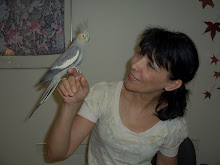
She’s looking. Looking, looking….
She thought yesterday, thinking again:
“What is there for me tomorrow –
Another somber day? More pain?”
“Tomorrow”, a mysterious matter,
Out of everyone’s reach and touch,
A rock-solid fence which crumbles
At the strike of twelve, at midnight…
She thinks beyond her pain and sorrow,
"Tomorrow, she thinks, shall be a better day,"
“Tomorrow is a Hope,
Tomorrow is always better than today…”
**********************
Tomorrow is just another day,
Yet, people shall remember to be kind…
And every evening everyone would say,
“Today I made ten people smile…”
May 31, 2009





























.jpg)

